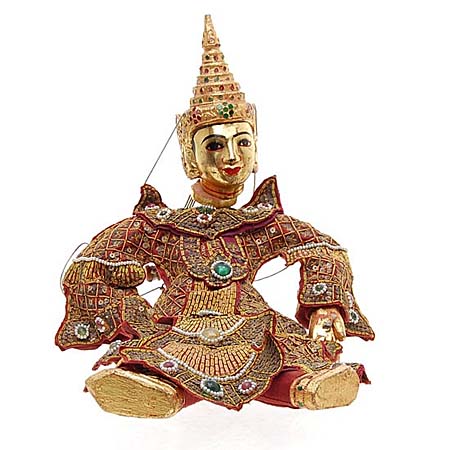
Owner: HWMC
Catalog#: AS-OTHR-25-14
Ritual Symbolism
Burma ‘Yoke thé’ (Marionette)
Myanmar (Burma)
Burmese People
Wood, cloth, stones, silk, paint
Mid 20th century
Length: 24 inches
Other – Ritual Symbolism
Burmese marionette shows (yokthe pwe) were a popular entertainment under the Burmese monarchy, and date back to the early 15th century. Like most of Burmese refined art, yoke thé (marionette) performances originated from royal patronage and were gradually adapted for the wider community. Yoke thé are a form of string puppetry called marionette that almost always was performed in the form of Burmese operas. In the 19th century, it reached its peak, after which lighter entertainments became more popular.
A Burmese marionette troupe includes marionettists (puppeteers), singers, and musicians. The most complex job of the Burmese marionette show is the working of the marionette strings that is done by one person. There are 16 strings attached to the head, hands, and feet of each puppet. These strings are than attached to a cross-piece handle. The vocalists sit behind the screen and the marionettists (puppeteers) stand behind the screen to handle the puppets, working in conjunction with each other. The orchestra (hsaing-waing) plays an overture before the performance. During the show, the orchestra instrumentalists accentuate the dramatic moments of the performance, featuring a set of tuned drums and a circle of gong chimes, double reed shawms and other percussion instruments.
Officially the Republic of the Union of Myanmar (formerly Burma), is inhabited notably by Burmese, Mon, Shan, and Karen; the majority is Buddhist, but belief in nats, animist spirits, remains strong.
Resource: https://blogs.bl.uk/asian-and-african/2018/04/burmese-marionette-theatre-.html
